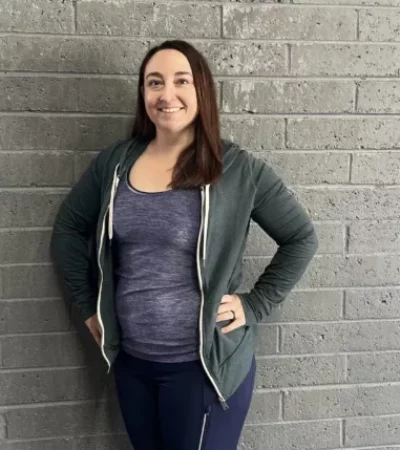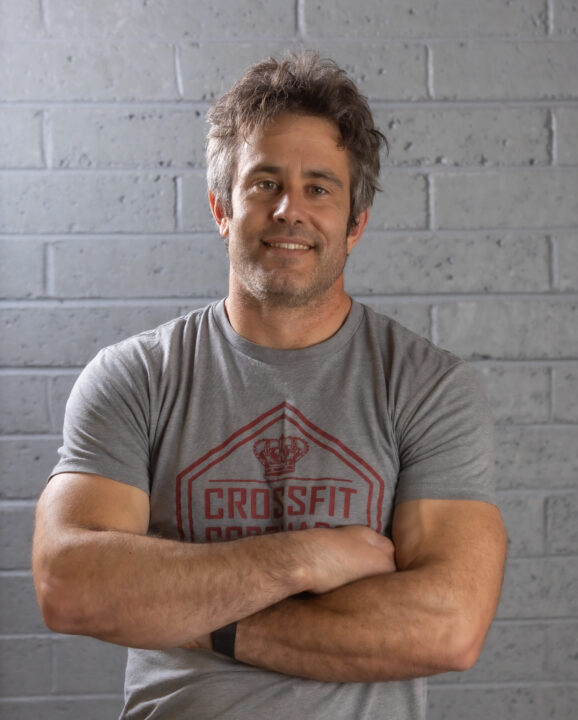By Clint Russell, DPT
So who here has had pain in the ITB. The ITB, or iliotibial band, is a piece of connective tissue that is a continuation of the Tensor fascia lata and gluteus Maximus. The ITB then runs down the lateral femur and inserts on gerdy’s tubercle, which is just distal to the lateral patellofemoral joint line and slightly proximal to the tibial tuberosity. This is the spot that hurts when people complain of ITB! The vastus lateralis runs along the top of the IT band and the biceps femoris fun posterior to it. If order to treat this we need to understand the biomechanics behind its cause.
Tendonitis, or tendonosis, or ITB band friction syndrome, or whatever you want to label it, is the RESULT, NOT the CAUSE! This is the case for pretty much any mechanical issue and MUST be understood in order to treat it effectively.
[1]
This picture is a great illustration of what is happening. As I mentioned before, the IT band continuous with the tensor fascia lata and Glute max. The TFL is a postural muscle and the glutes are phasic. This means that the TFL tends to get short and tight, while the glutes become elongated and weak. The short tight TFL pulls the leg and hip according to its actions. Those are hip flexion, abduction, and internal rotation. Think about that for a second… What does that look like when someone is running? It causes a windmill action of the leg. Instead of the leg coming straight through, it whips around in a circle. This is obviously not an efficient movement pattern. When we combine that with a ton of repetition, we create more wear and tear that goes into the ITB insertion point, gerdy’s tubercle. Now where do the glutes come in? They balance out the hip flexors. They create stability in our hips as the foot hits the ground. If the glutes are elongate and can’t create external rotation, then you end up with a valgus knee. Over time, this cause friction of the ITB band over the femoral condyle, which leads to pain.
How do we address this? We need to strengthen the glute med/min. Any time I have someone with knee issues, you can bet there is either hip or ankle instability. As I mentioned we have to be able to stabilize the hip to prevent the knee from diving in. The glute medius and minimus attach to the greater trochanter and externally rotate the thigh when the hip extended. This allows us to create stability upon footfall. We also need to address the tight TFL. Because this is short, it pulls the leg in more a circle action in the swing phase of the running as opposed to allowing the leg to come straight through. It also contributes to an excessive anterior pelvic tilt, which forces elongation of the glutes. If the glutes are elongated, they simply can’t produce the force necessary to do their job. Try arching your back as much as you can, then squeeze your butt. You can’t. So in short, we need to move the pelvis in a more neutral position by getting after the TFL, and then the good ole couch stretch for good measure. Once we have done that, we then strengthen hip abduction via those weak glutes. It is best done in this order. First we gain range of motion, and then we train range of motion.
Here are some videos.
Notice that when I demo what this looks like in the squat, it is the same thing that happens in running. The hip internally rotates, knee dives, creating a windmill type effect. If there is an inefficiency in movement, it will show up any time the body is under stress.
I threw this in because a lot of people have not been shown how to do it correctly. All of these little changes in position matter a ton. Hold yourselves and your athletes accountable to moving well.
So as I said before, without adequate strength in the hip abductors, we can’t create stability upon foot strike, or in the bottom of the squat. We can mobilize all day, but it won’t fix weak glutes. It will help, but to completely correct the issue we must stabilize the hip. This is great to do as part of the warmup.
- Lisa Chase, Megan Schooley PHT 5 234 C 002 General Therapeutic Exercise I. 2012. USA. 1 University Boulevard St. Augustine, FL 32086.







